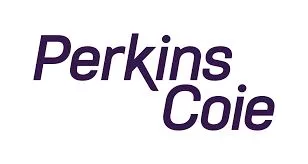- within Environment topic(s)
- within Transport topic(s)
Key Takeaways
- AB 130 and SB 131 were recently passed by the California Legislature and signed by Governor Gavin Newsom, enacting the most significant reforms to CEQA in recent years.
- AB 130 establishes a new statutory exemption from CEQA for infill housing projects that meet specific criteria.
- SB 131 limits CEQA review for housing projects that nearly qualify for an exemption, focusing only on the environmental effects caused by the single condition that disqualifies them.
- Other significant provisions put in place by AB 130 and SB 131 pertain to housing element rezoning, nonresidential project CEQA exemptions, recordkeeping, and more.
During the annual state budget process, the California Legislature passed, and Governor Gavin Newsom signed, two bills that include the most significant reforms to the California Environmental Quality Act (CEQA) in recent years. Most prominently, AB 130 and SB 131 (1) establish a major new exemption from environmental review under CEQA for housing projects and (2) substantially curtail CEQA review for housing projects that fail to qualify for an exemption by a single condition. This Update discusses these two provisions and briefly notes several other important changes made by the reform bills.
Both bills took effect immediately following their passage on June 30, 2025.
New CEQA Exemption for Infill Housing Projects
AB 130 creates a new statutory exemption from CEQA review for housing development projects in urban areas that meet the following criteria:
- The project site is no more than 20 acres, except sites for builder's remedy projects, which are limited to five acres.
- The project site previously was developed with an urban use or largely adjoins or is surrounded by urban uses.
- The project is consistent with the applicable general plan and zoning, as well as any applicable local coastal program. Use of the Density Bonus Law does not make a project inconsistent with these documents.
- The project is at least one-half the applicable density specified in the Housing Element Law as appropriate to accommodate housing for lower-income households.
- The project site is not a type of site excluded from eligibility for streamlined, ministerial approvals under a provision of SB 35 / SB 423.
- The project does not require demolition of a historic structure on a national, state, or local historic register.
- No portion of a project deemed complete in 2025 or later is designated for use as a hotel or other transient lodging.
The new CEQA exemption requires that local governments consult with California Native American tribes and impose, as conditions of approval, any enforceable agreements reached during project consultation, as well as several specified measures, as applicable. A Phase I environmental assessment also must be completed, with further requirements contingent on its findings. Finally, to rely on the new exemption, specified labor standards must be met for buildings more than 85 feet in height and projects in which 100% of units are dedicated to lower-income households.
Limitation on CEQA Review for Eligible Housing Projects
SB 131 provides that, for a housing development project that would otherwise qualify for a statutory exemption or for certain categorical exemptions "but for a single condition," CEQA review is limited to "effects upon the environment that are caused solely by that single condition." A "condition" is defined as "a physical or regulatory feature of the project or its setting or an effect upon the environment caused by the project."
An initial study or environmental impact report for a qualifying housing project "is only required to examine those effects that the lead agency determines, based upon substantial evidence in the record, are caused solely by the single condition that makes the proposed housing development project ineligible" for the exemption. An environmental impact report prepared to analyze the effects of a single condition is not required to include any discussion of alternatives or growth-inducing impacts.
Housing development projects that include "a distribution center or oil and gas infrastructure" or that are located on "natural and protected lands" are not eligible for SB 131's limitation on CEQA review.
Additional Noteworthy Provisions
SB 131 includes a new statutory exemption from CEQA for most rezonings implementing an approved housing element.
SB 131 also creates several CEQA exemptions specific to tightly defined (largely) nonresidential projects, including day care centers, linear broadband installations, farmworker housing, high-speed rail, community water systems, and advanced manufacturing facilities.
SB 131 includes an important legislative finding that "CEQA should not be used primarily for economic interests, to stifle competition, to gain competitive advantage, or to delay a project for reasons unrelated to environmental protection." This finding suggests legislative disagreement with the courts' traditionally liberal application of rules governing who may bring a CEQA lawsuit.
Lastly, SB 131 amends the required contents of the record of proceedings for CEQA litigation to exclude most internal agency emails "that were not presented to the final decision making body."
For its part, AB 130 also includes a meaningful amendment to another state law, the Permit Streamlining Act. Public agencies now generally are required to approve or disapprove a housing development project subject to ministerial review within 60 days of receipt of a complete application.
Conclusion
For numerous projects, especially residential developments, AB 130 and SB 131 will make a major difference in the level of required CEQA review based on new judgments made by the Legislature. In AB 130, the Legislature determined that a broad class of residential development will confer greater statewide benefits if more swiftly approved and built than if forced to undergo project-by-project CEQA review. Under SB 131, the Legislature reached the same conclusion for certain narrow categories of nonresidential projects, and it strictly limited the scope of CEQA for many housing development projects that do not quite qualify for a wholesale exemption from environmental review.
The content of this article is intended to provide a general guide to the subject matter. Specialist advice should be sought about your specific circumstances.



